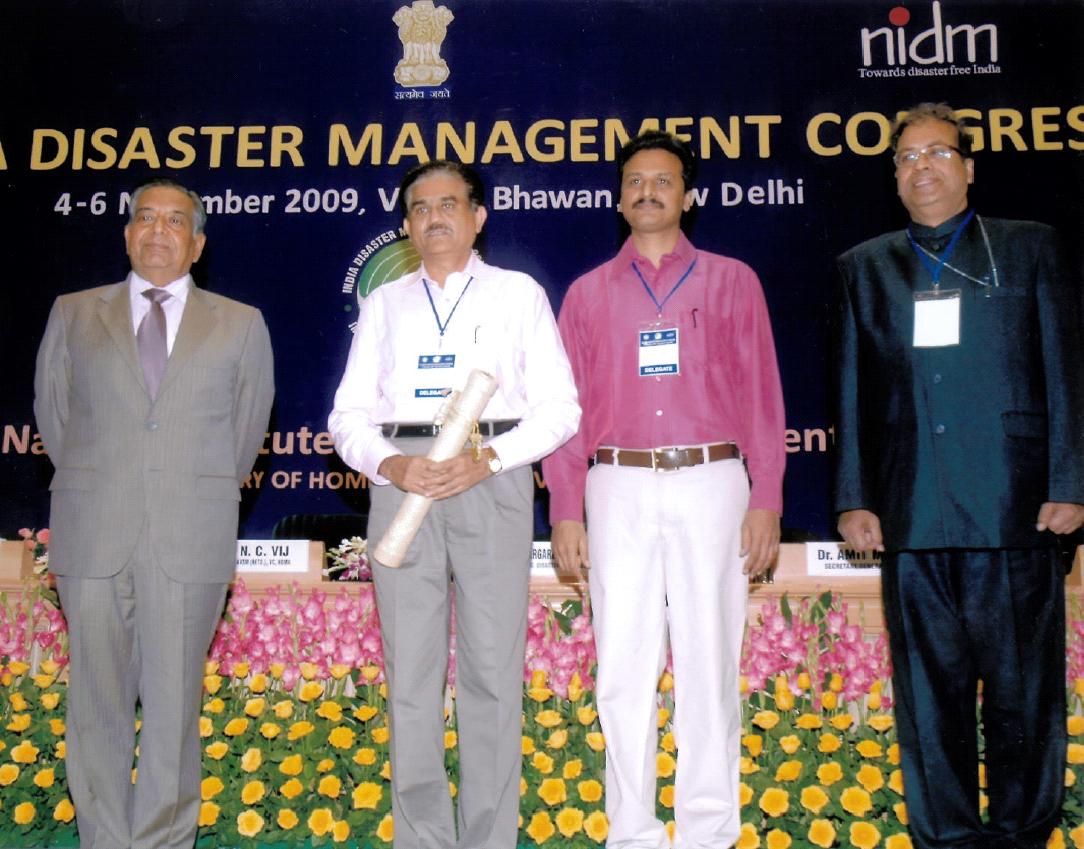Many international organisations, voluntary agencies and national governments have been working towards reducing the impact of disasters and minimise the loss of life and property on account of man-made and natural disasters.
These efforts have been directed at identifying the vulnerability of areas and local communities and developing organisational systems and institutional capacity for risk reduction and disaster response programmes.
In India, the Disaster Management Act, 2005 was enacted on December 26, 2005 to develop plans for prevention and mitigation, and procedures to strengthen capacity building and awareness among people. The Act also permits states to have their own legislation on disaster management.
ADVERTISEMENTS:
Under the Act, a ten-member National Disaster Management Authority (NDMA) was constituted with the prime minister as the chairperson. The Authority, with the assistance of the National Executive Committee (NEC) of Secretaries is responsible for:
- Preparing national policies, plans and guidelines for disaster management.
- Approving disaster management plans developed by the states.
- Coordinate enforcement and implementation of the policy and plan.
- Arrange for funds and take effective measures for disaster prevention, mitigation, preparedness and capacity management.
- Provide assistance to countries affected by disasters.
Each state has its own disaster management authority, which is chaired by the chief minister. The state authority, assisted by a State Executive Committee, forms policies and plans for disaster management in the state.
A district disaster management authority has also been established by every state in each district. The district authority is headed by the district magistrate.
ADVERTISEMENTS:
The local authority trains its officers and employees and maintains the necessary tools and equipments for relief and rescue operations. It also ensures that all construction projects under it conform to the standards and specifications laid down by the state government.
Under the Act, several institutions and funds at the state and district levels were setup.
The Act requires every ministry or department of the Government of India to set aside funds in its annual budget for the activities and programmes set out in its disaster management plan.
Natural disasters result in huge unemployment and underemployment problems. Measures such as building cyclone shelters, a forestation in coastal areas etc have been undertaken to respond to cyclones.
ADVERTISEMENTS:
Reconstruction projects have been taken up in areas affected by major calamities by designing structural mitigation schemes.
The activities consist mainly of housing and public infrastructure, drainage and rural water supply, expansion of road and communication networks, and shelter belt plantations.
Despite these measures, the task is very complex in a country of India’s size and diversity. Population pressure, environmental degradation, migration, poverty, illiteracy and unplanned urbanisation are some of the major factors contributing to increased risk and vulnerability.
Non-structural disaster mitigation efforts need to be accelerated in the country. It is necessary to emphasise the links between disaster mitigation and development plans, the development of effective communication systems, the application of latest information technology, risk reduction and risk transfer options like insurance, extensive public awareness and education campaigns in vulnerability reduction, legal and legislative support, the involvement of the private sector, the strengthening of the institutional framework for disaster response at the national, state and district levels, the applications of remote sensing, geographical information system, etc.
Above all, it is important that civil society initiatives be strengthened and supported to ensure that the existing institutional mechanisms deliver the services they are expected to deliver effectively and efficiently.

